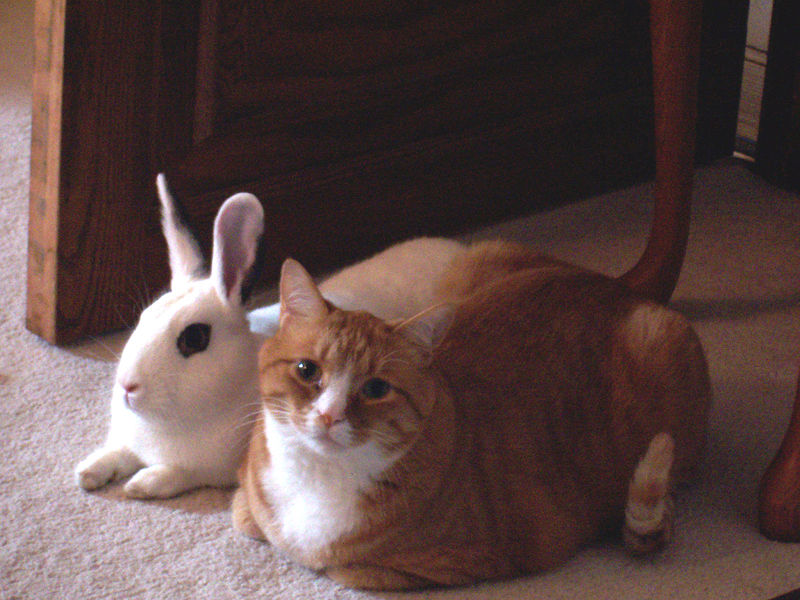Bringing In a Second Cat to Your Home: The Facts First
Author bio: This post was submitted by Emma, a professional writer and blogger, with two furry friends and a lot of pet behavioral and pet health knowledge to share. She has written for numerous big animal magazines and health sites, and is a regular contributor to The Catington Post.
If you are a cat person and have one fur baby at home, you’ve probably heard that your cat needs a playmate. Yes, the KitNipBox is purrfect, but sometimes your cat just wants to play with a fellow feline.
So, you start thinking about bringing in a second cat. After all, taking care of two cats is not so different from one. Plus, your kitty will have a fellow feline to share the KitNipBox. But before you head out to the shelter or pet shop, some questions can’t seem to get off your mind:
Does gender matter? How about age. What is the most appropriate age? What kind of cat-personality should you be looking for? And how do you prepare your home for the new cat?
Here are some facts you should consider before bringing in a second cat to your home.
Cats are solitary animals, but they love family company
Adult cats are usually independent and like to live solo. They are also territorial and not very tolerant of strange cats. However, cats usually have a liking for close family. Some cats enjoy grooming one another and sharing sleeping areas. However, the experts at Pet Food Sherpa give the advice of giving cats their own food bowls, as naturally cats feel comfortable eating and hunting solidarily. They go on to say, “Coercing cats to share their food or bowls can equate to fights or aggression.”
As well as considering separate food bowls, consider the following facts.
Gender is not so crucial
When you adopt a kitten from a shelter, you will probably find it already neutered or spayed. If you plan to buy from a pet shop or another source, ensure they are fixed. This procedure significantly reduces gender-based behavioral issues. As you bring the new cat to your home, whether it’s a female cat or not does not matter as much as age and temperaments.
Age and temperament matter the most
You will not have a problem introducing two kittens to each other. They are still exploring the world and will probably enjoy hanging out and playing right from the first day. Having said that, if you are picking from a litter, avoid bringing home a kitten who is constantly hissing, growling, or fighting with her mates. She might traumatize your kitten and trigger behavior problems.
Adult cats, on the other hand, are not so welcoming of other adults into their territory. It may take weeks or even months for a successful gradual introduction. Temperaments can affect the integration process. For example, if your cat is slow and easygoing, pair her up with another feline with the same personality. If you introduce them gradually and correctly, you may have little trouble integrating them. On the other hand, pairing two highly active and outgoing cats could lead to fights.
Preparation is essential
Before you bring in another cat, it is crucial to prepare your home and the resident cat. Set up a separate section of the house for the new cat. Provide her bedding, feeding equipment, litter box, and exercise stations.
Cat relationships are unique
Are you in a situation where your cat lost a sibling, and she is showing signs of feline grief? Do not be quick to introduce another cat into her life.
Although your cat seems lonely and in need of feline company, introducing another adult cat too soon could be catastrophic.
Besides, their personalities could be miles apart, and you could be setting them up for endless fights.
Set realistic expectations
Introducing an adult feline into your home when there is an established resident could take weeks or months. Also, keep an eye on the cats during their interactions and prepare to intervene when they are not so cordial. Sometimes even if you follow everything in the books, some adult cats never accept a fellow adult cat into their territory – your home.
Photo by Peter Lam CH on Unsplash
A final word
Although cats are solitary creatures, they need plenty of social interaction, mental stimulation, and physical activity. It does not matter if they are a single cat or there are multiple cats at home. An engaged and interactive family will often provide a cat with sufficient companionship, opportunities to play, and mental and physical stimulation.







![Dj Scratch mixing some beats. 🎧 🎶 #Mewsic #KitNipBox
[via Instagram | @dharmacatnitiative]](https://www.kitnipbox.com/meow/wp-content/plugins/instagram-feed/img/placeholder.png)